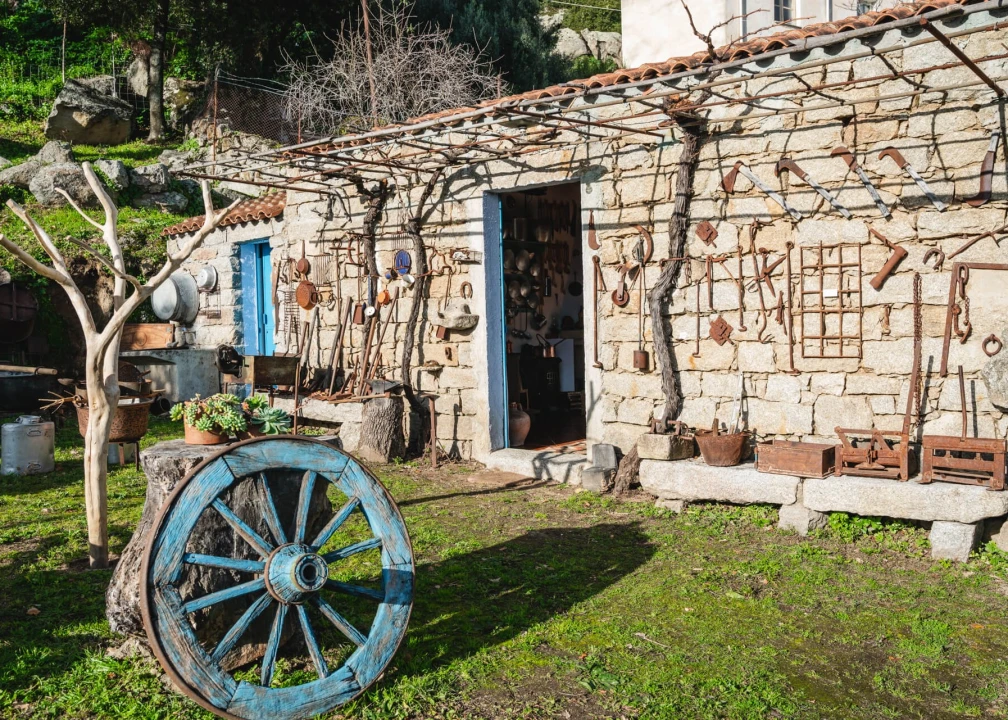The village, almost entirely uninhabited, retains the medieval urban structure and architecture of ancient Sardinian rural villages. The 17th-century church of La Maddalena is the result of the expansion of a pre-existing house of worship. It is in late Gothic style, with pointed arches in red trachyte.
The former monastery on Bixio Street, inhabited by nuns until the end of the 19th century, is now reused as a private house. Bixio Street itself covers a stream that ran through the village dividing it into two districts, the one on this side of the stream, called Custa Banna, and the one of Cudda Banna on the other side of the stream.
The house museum is a journey to discover the traditions and way of life of a hundred years ago.
The Pupurughine Falls can be reached by an easy trek from the center of the village to the plateau above, from which a wide horizon opens up to the sea.
The Lollovers Inn organizes customized packages for all visitors. The restaurant's menu varies according to what the farm and the season offer; all products are zero-mile.
Lollove comes alive in religious festivals: in early February there is that of the current patron saint St. Blaise, on July 22 the ancient patron saint St. Mary Magdalene is celebrated, on August 25 St. Louis of the French, and finally on September 16 St. Euphemia, venerated by shepherds, is celebrated.
The name and history
The name Lollove, which seems designed for social media these days, may come from the archaic Sardinian terms lo' ò, whose meaning is "watercourse," and lòbe, "acorn." The reference is to the location of the village in an area crossed by a watercourse and where there is an oak forest rich in the acorns on which pigs feed.
At the origin of the depopulation of this small village about fifteen kilometers from Nuoro, Sardinia, of which it is a hamlet, there is a legend. A group of nuns (perhaps penitent Franciscan nuns) chased out of the village for indecent behavior, allegedly issued a curse: Lollove as a esser chei s'abba è su mare, no as a crescher nen parescher mai! Translated from the Sardinian language, "Lollove you will be like water from the sea, you will never grow or die." Almost uninhabited, the village nevertheless does not die: it remains standing, albeit barely, shrunken but alive, a precious testimony to a past that has not yet crumbled completely, as has happened to so many other villages scattered across the Barbagia countryside.
Low stone houses, narrow cobblestone alleys: the origin of the place is clearly medieval. In 1615 Lollove had 25 inhabitants, but more than two centuries later, in 1838, it had reached 180, and the economy was almost all about livestock farming: chronicles report that 25 farmers and 20 shepherds shared 600 cows, 500 goats and two thousand sheep.
At the end of the century, in 1896, the Nuoro poet Sebastiano Satta wrote: "Lollobe, surrounded by a few holm oak hedges, a few saddened almond trees and many agaves and pale wild olive trees, appears down in the valley, abandoned, like a dead man in a coffin. In that country no trace of the passing of the Magi, the handsome watchmen with the golden scepter."
At that time there were 397 inhabitants and such, more or less, remained until the middle of the twentieth century. In 1919 Grazia Deledda set her novel La madre (The Mother) in the ancient rural village. The roofs caved in or covered with clay tiles, the creepers clinging to the crumbling walls, the rare houses inhabited by elderly people displaying a vase of flowers or a window outlined in blue: Lollove makes for much melancholy but has within it the seeds of rebirth.
An inn was opened in 2008, two daily bus rides connect the hamlet to the capital Nuoro, and, thanks to EU and regional funds, the municipality and the Region of Sardinia are working to restore and enhance the small rural village.




